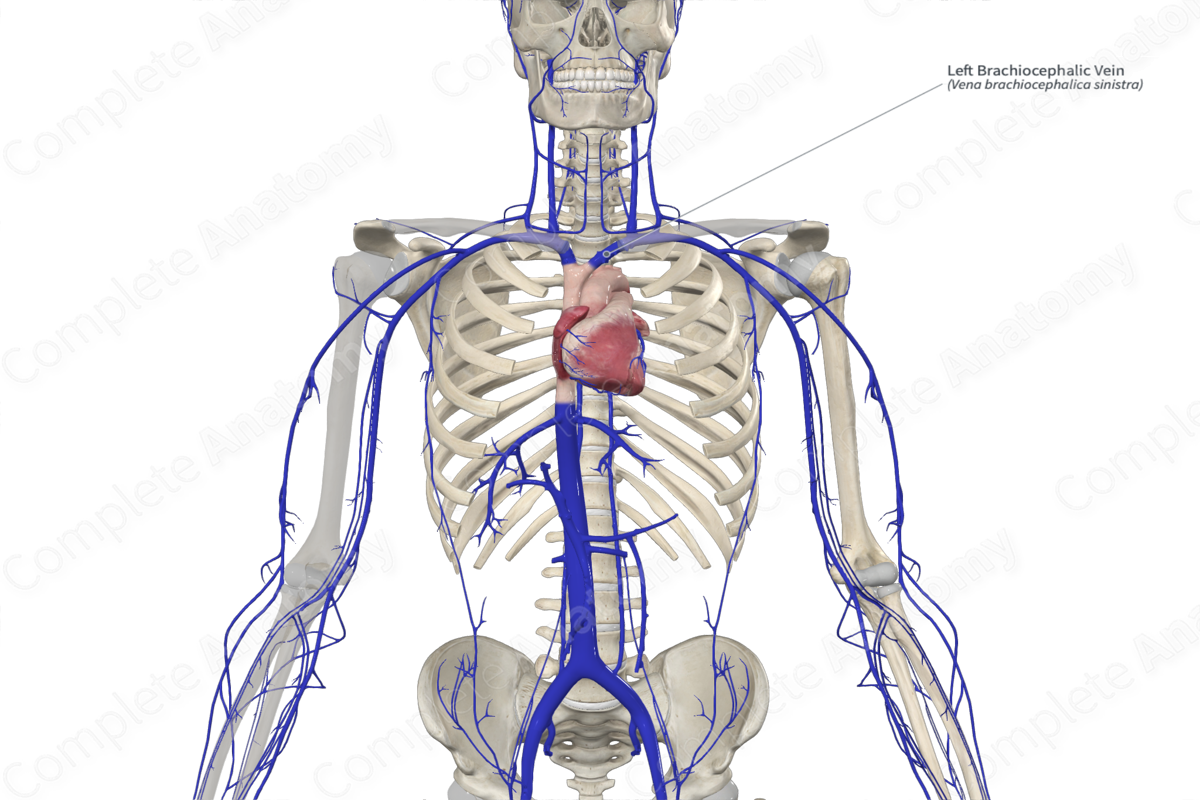
Quick Facts
Origin: Union of left internal jugular and subclavian veins.
Course: Descends obliquely to the right to join the right brachiocephalic vein.
Tributaries: Left vertebral, internal thoracic, pericardiacophrenic, supreme intercostal, superior intercostal, mediastinal, and inferior thyroid veins, the thymic veins, and the thoracic duct.
Drainage: Head, neck, and upper limbs.
Origin
The left brachiocephalic vein is formed by the union of the left subclavian and internal. Jugular veins at the root of the neck, posterior to the sternal end of the clavicle.
Course
From its origin, the left brachiocephalic vein descends obliquely to the right across the superior mediastinum, anterior to the branches of the arch of aorta (the brachiocephalic, common carotid, and subclavian arteries), left vagus and phrenic nerves, and the trachea; and posterior to the manubrium of the sternum, thymus, and the sternothyroid and sternohyoid muscles. As it reaches the sternal end of the first costal cartilage, it unites with the right brachiocephalic vein, thus forming the superior vena cava.
Since the left brachiocephalic vein crosses from left to right across the midline, it is more than twice the length of the right brachiocephalic vein.
Tributaries
Tributaries of the left brachiocephalic vein include the left vertebral, internal thoracic, pericardiacophrenic, supreme intercostal, superior intercostal, mediastinal, inferior thyroid, and thymic veins. The left brachiocephalic vein also receives the thoracic duct.
Structures Drained
The brachiocephalic veins drain blood from the head, neck, and upper limbs.




